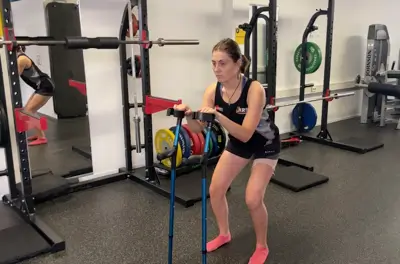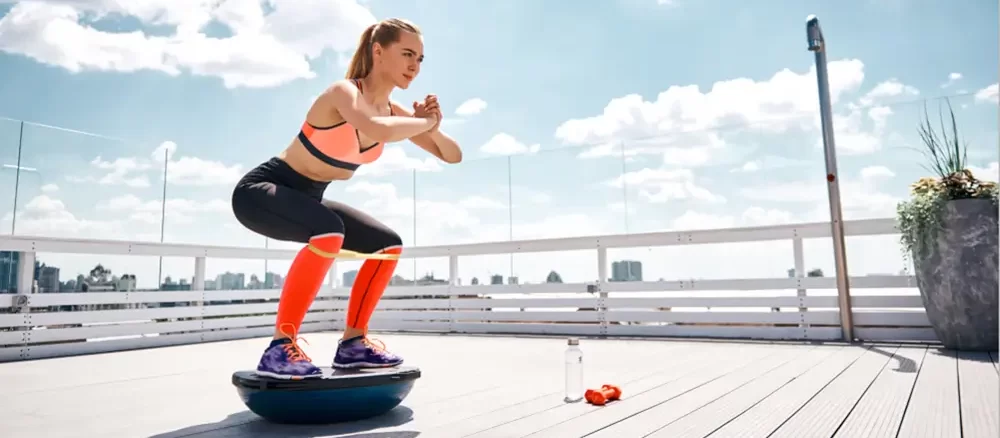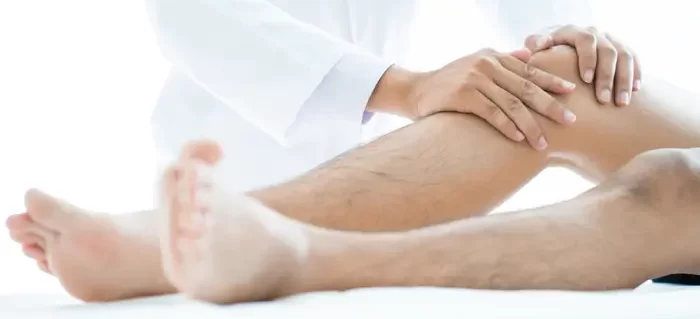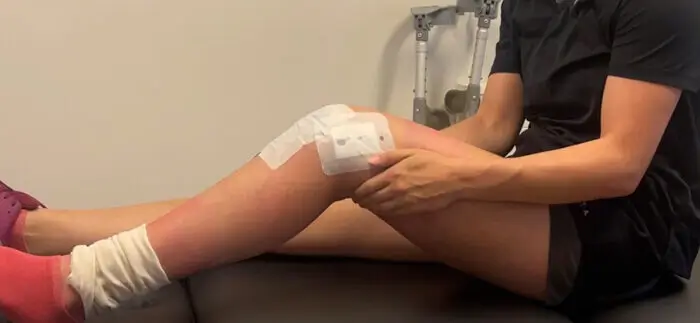
Lock complaints after anterior cruciate ligament surgery
Are you in the early stages of recovery from anterior cruciate ligament surgery and does your knee ever get stuck or locked? Are you worried about it? In this blog series, we discuss the most common questions after anterior cruciate ligament surgery. Today's focus is on lock symptoms, locking or stuck knee in the initial period after anterior cruciate ligament surgery. You'll get answers to the question: what are lock symptoms, how do they occur and why do lock symptoms occur. But of course, the two most important questions are: is it harmful and what can you do about lock pain? Read the 5 tips in this blog.
My knee is stuck what now?
What are lock symptoms after anterior cruciate ligament surgery?
Lock symptoms refer to the feeling of locking or "stuck" of the knee during movement. It appears as if the knee does not move smoothly and blocks while walking and when performing knee exercises. These lock complaints cause a feeling of discomfort, pain and uncertainty during movement. They often occur in rehab of the ACL.
How do lock symptoms occur after anterior cruciate ligament surgery?
The consequence of anterior cruciate ligament surgery is a sore and swollen knee. The knee also usually becomes stiffer, as does the mobility of the kneecap. After several weeks, the swelling gradually decreases in the knee, as does the size and strength of the upper leg muscles (quadriceps). A knee that is stuck is particularly a feature of impaired control and strength of the upper leg muscles. Any stiffness in the mobility of the kneecap reinforces this picture. It makes you insecure while walking because the feeling that the knee could lock or lock at any moment causes you to prefer to keep your leg extended. Performing knee exercises is also uncomfortable. It is important to work with your physical therapist to find out what causes this and what can be done about it.
Why is the knee stuck after anterior cruciate ligament surgery?
At the front of the knee is the kneecap. It slides over the femur bone when bending and stretching. From about 30 degrees of flexion, the kneecap is controlled by the shape of the femur bone. In full extension, the kneecap is controlled by muscles. In the first few weeks, the kneecap floats like a float on the fluid in the knee, but as the swelling subsides, the kneecap again makes contact with the underlying bone (femur). The reduced size and disrupted control of the quadriceps has reduced control of the kneecap in extension. From full extension to flexion (around 30 degrees), the kneecap struggles to enter the trough, which is similar to a train that is not properly on track. This causes the knee to block and feel as if the knee is stuck or locked.

Are lock complaints and/or jamming of the knee harmful?
Lock complaints, such as locking or jamming of a knee, as often described by people in rehab, are not harmful. Nor are they serious, but they are irritating. When walking and doing exercises, bending and stretching are made difficult. As a result, you see rehabbers walking with the leg extended and squatting is impossible because the knee is stuck. This can interfere somewhat with anterior cruciate ligament rehabilitation, but nothing has been damaged and nothing will be damaged.
What can you do if you are not stuck?
A knee that is stuck can be loosened again by stretching the knee. This is a useful technique, but does not solve the problem. There is no short-term solution. Still, if treated properly, it often goes away after a few weeks (sometimes months). The cause of the problem is usually muscle weakness and reduced control of the upper leg muscles. So the long-term solution is to exercise the muscles. Still, it can be frustrating and make you unsure if it will indeed go away. The thought that there may be something else going on may also haunt your mind. As mentioned earlier, it is common, so discuss it with other rehabbers and find out how they experienced it. You will hear that it will pass over time. However, it does not by itself, and the tips below may help.
6 Tips to get rid of your lock complaints:
- Train regularly
- Focus on strengthening the quadriceps
- Train pain free
- Ensure good kneecap mobility
- Patience
- Trust the process





